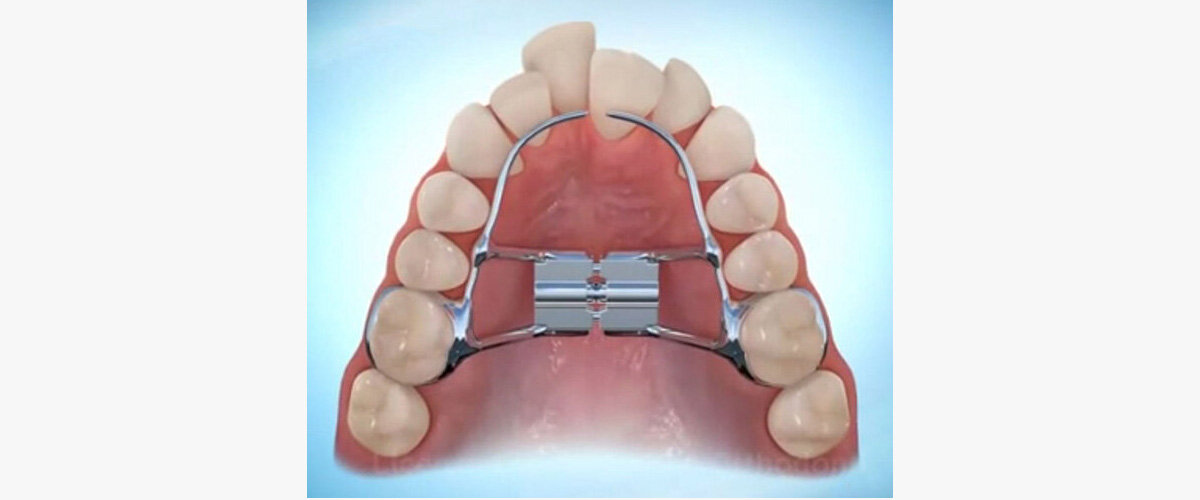What to Expect With Your Child's Orthodontic Expander
One of the most common orthodontic appliances used in young children is the palatal expander. These appliances look intimidating to patients and the thought of having to “do the turns” every day scares a lot of parents. What can you expect while your child has an expander in their mouth?
It is best to expand while patient is still growing
Arch expansion is one of the most common ways to eliminate crowding and crossbites in growing patients. Successful expansion requires that the growth plate in the roof of the mouth (the midpalatal suture) is not fused or calcified. This fusion usually occurs between 14 and 16 years of age.
There are several styles of palatal expander
An expander is attached to the upper arch by bands placed around the teeth or plastic bonded over the teeth. Other styles of expander may push on the palatal tissue or rest on temporary anchors (TADS) inserted into the bone. Although there are removable expanders, fixed ones have an important advantage in that they cannot be taken out, lost, or forgotten.
It is normal to feel pressure on the teeth and behind the nose
While there may be some initial discomfort when an expander is placed just because there has never been anything like that attached to the teeth before, for the most part upper arch expansion is relatively painless. Patients report that they feel pressure on the teeth, in the roof of the mouth, behind the nose, and even between the eyes as their expander is activated. This pressure fades within minutes.
Temporary changes in speech and the development of a space are common
Besides pressure, you can also expect your child to speak differently for the first few days. Additionally, you may hear them slurping as their mouth creates extra saliva after expander cementation. One of the most visible signs that the suture is opening (the desired effect) is the appearance of a space between the upper central incisors. The space is created as the expander pushes the two halves of the palate in opposite directions. Once you have stopped activating the expander, it is normal for the space to close spontaneously. This occurs as the elastic fibers in the surrounding gum tissues pull the teeth to their original positions. The underlying bone, however, remains expanded. It is also normal for the front teeth to feel a little loose and get sore as they move back together.
Change your child's diet for a few days to make the transiiton easier
To make the first couple of days more bearable for your child as they adapt to their new expander, you may want to find some fun foods for them to eat that don’t require a lot of chewing. Examples include yogurt, pudding, mashed potatoes, ice cream, soup, etc. A day or two after their delivery appointment, the expander will feel natural in their mouth and normal eating will resume. While expanders are more forgiving of hard and sticky foods than are braces, it is recommended that patient avoid jelly like candies that would get stuck in the expansion screw.
Overexpansion anticipates relapse
Because there is always some relapse (movement back towards the original size), your orthodontist may choose to over-expand your child’s palate. He will decide how much expansion is necessary as part of the initial diagnosis and treatment plan. After your orthodontist indicates that you’ve reached your target, he will instruct you on how long the retainer should stay in place to stabilize the results. This may range from two months to the entire length of treatment.
NOTE: The author, Dr. Greg Jorgensen, is a board-certified orthodontist who is in the private practice of orthodontics in Rio Rancho, New Mexico (a suburb on the Westside of Albuquerque). He was trained at BYU, Washington University in St. Louis, and the University of Iowa in the United States. Dr. Jorgensen’s 25 years of specialty practice and nearly 10,000 finished cases qualify him an expert in two-phase treatment, extraction and non-extraction therapy, functional orthodontics, clear aligners (Invisalign), and multiple bracket systems (including conventional braces, Damon and other self-ligating brackets, Suresmile, and lingual braces). This blog is for informational purposes only and is designed to help consumers understand currently accepted orthodontic concepts. It is not a venue for debating alternative treatment theories. Dr. Jorgensen is licensed to diagnose and treat patients only in the state of New Mexico. He cannot diagnose cases described in comments nor can he select treatment plans for readers. Please understand that because he has tens of thousands of readers each month, IT IS IMPOSSIBLE FOR HIM TO RESPOND TO EVERY QUESTION. Please read all of the comments associated with each article as most of the questions he receives each week have been asked and answered previously. The opinions expressed here are protected by copyright laws and can only be used with written permission from the author.

